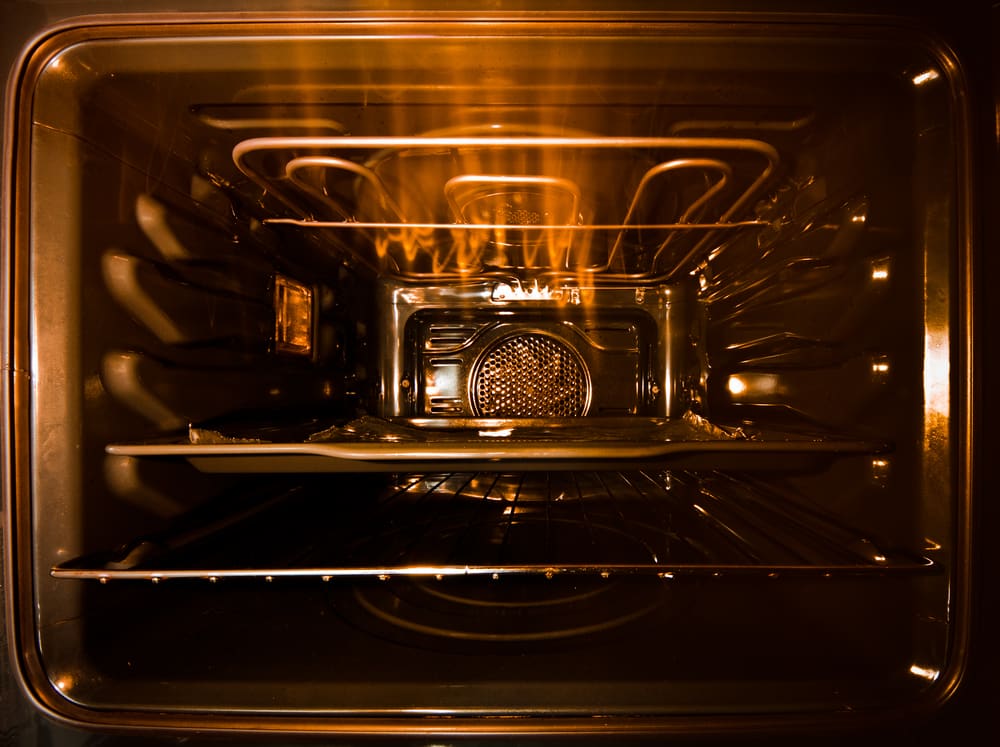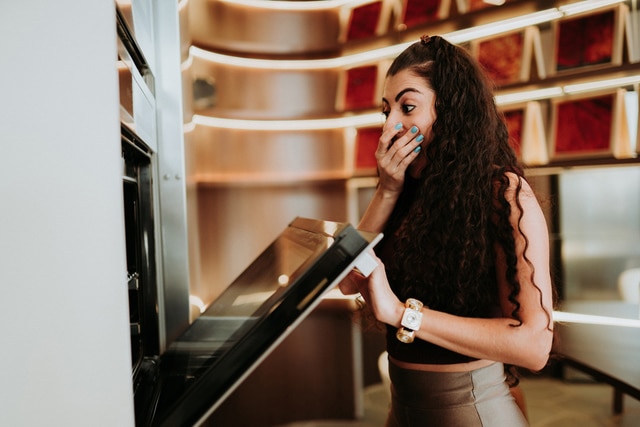
Gas stoves, with their many advantages, are as popular as ever. Having a gas stove can contribute to reducing your energy consumption. Although there are various types of gas stoves, they all use natural gas, propane, or butane. They require a steady supply of gas to function.
It is normal that there will be flames in a gas oven. If your gas oven is working properly, you’ll see a blue flame along the perimeter of the burner.
You’ll also see a traditional orange flame from the electric igniter. This is all normal. However, things can change, There can be abnormal flames in your gas oven, leading to a fire. Most home fires start in the kitchen.
A healthy, properly burning flame on gas appliances should be blue in color, sometimes with just a hint of yellow. This blue-colored flame indicates that there is safe, efficient, and complete fuel combustion.
Regardless of whether your appliance is a gas cooking range or fireplace, with gas you want to see that safe, blue flame.
Is It Normal To See Flames In Gas Oven?
Small inch-size flames the norm
The gas is ignited by a pilot flame or a spark generator. It is normal at this stage to see flames in your gas oven. What is a normal flame? Should the flame be an inch high or eight inches high? A pilot flame is blue, steady, and up to about half an inch high.
A gas flame that is large and appears yellow or orange in color indicates an improper ratio of oxygen for combustion. It can just be temporary, caused by dust particles.
However, if the flame continues to burn yellow or orange, it could be more serious. It is important to have a qualified professional check your gas oven.
When you turn on a gas stove burner, it is important to ensure that the flame that is produced by the burner is of the correct size and does not become too high.
Gas pressure too high
A high flame can be dangerous in your gas stove. It can cause burns. One of the main causes of a high flame is the gas pressure being too high. If the gas line that supplies the gas to the stove is overpressurized, it causes the gas to flow at a higher pressure.
This is what causes a high flame when the burner is turned on. Check your burner too, because a dirty burner restricts the flow of gas to the burner. Causing it to flow at a higher temperature.
A lot depends on the model of gas oven you have. Some models intentionally have a larger, uneven flame.
Sometimes the problem is splattered grease
It will also be normal to see flames in your gas oven after any kind of cooking accident. There are ingredients, such as grease, that are highly flammable. Splattered grease ignites quickly when it comes into contact with a flame.
Batter that spills over a baking tray onto the oven surface can also ignite. A good tip is to simply cover this splatter-prone food. You can prevent a fire by using a splatter cover. A dirty oven is more likely to start a fire than a clean one.
Follow manufacturer instructions
However, if you see larger flames than you normally see, this might be a cause for concern. Incidentally, both gas and electric stoves can cause fires. Always follow the instructions of the manufacturer when using your gas stove.
Gas leaks and loose connections
If you have a gas stove, regularly check for gas leaks. Replace old, rusted parts. Gas ovens can catch fire if there’s a leak in the gas supply pipe. Lack of maintenance can result in pipe problems.
Loose connections are the main cause of gas leaks. To prevent gas oven fires, perform regular inspections on the pipes.
Large flames can certainly indicate a problem. It could be a faulty gas valve or even a gas leak. If the flames in your gas oven are larger than usual, or if you smell gas, you need to take immediate action. You need to switch your gas oven off immediately.
Never leave a turned-on gas stove unattended
If you don’t use a gas stove properly, it can be a fire hazard. You should also never leave your gas oven unattended once it is turned on. Leaving a gas stove on for a long time or even overnight, can be hazardous. It can cause a fire or, worse, an explosion.
Gas ovens aren’t regarded as dangerous, but they do pose some safety risks. So when you turn on your gas oven, you’re opening the gas supply. A spark is created that ignites the gas and lights the burner.
But what does it mean if you see flames in your gas oven? You need to know that it is not normal to see flames in a gas oven. You’re right to be concerned, as the flames are a sign of a safety issue.
Use the right fuel
Make sure you use the right fuel. If the gas supply to your range is liquid propane and the range is designed for natural gas, the higher-pressure LP gas will result in a flame.
Your installer may have hooked up your gas range to a gas line without checking whether the gas supplied is liquid propane or natural gas.
Natural gas and LP gas have different transmission pressures. LP gas has a higher pressure than natural gas. This is why it is so important to have a reputable company install your gas stove to ensure it functions efficiently but also safely.

